I hated studying Shakespeare at school. I didn’t get the point. Why couldn’t we have looked at more contemporary literature instead of some old dribble from several hundred years ago? I get the historical and cultural importance of it, but watching Baz Lurhman’s rendition of Romeo & Juliet was all the Shakespeare I needed thank you very much.
It’s quite a European thing to look at the past with rose-tinted glasses. This is particularly the case with European car makers. I’m all for continuing tradition and remembering the past to look into the future, but European manufacturers take this quite seriously. Mercedes-Benz like to remind you they’ve been around for 130 years every few minutes, let’s not even start with Rolls Royce.
Japanese manufacturers don’t really do the whole heritage thing mainly because they’re not as old as the Europeans. You don’t see many retro-inspired Japanese cars whereas European manufactures love going down that route. Cars like the current Fiat 500, Mini, and Porsche 911 are all basically the same designs as their ancestors only modernised to meet modern safety standards.
Instead, it’s looking at the present and the future with Japanese manufactures. Without a point of reference from the past for inspiration, they have to find their own path. As a result, Japanese manufacturers have always been thought of as left-field alternatives to the Europeans. And it’s particularly the case with the premium Japanese brands such as Infiniti.
Infiniti has been around since 1989, or in other words as long as Lexus has been around. Yet Nissan’s posh division isn’t as globally known as Toyota’s. Infiniti isn’t even offered in New Zealand officially. Well, okay there was a brief and random stint a couple years back where they dipped their toes in New Zealand waters but nothing really came from it.
However, there is talk that Infiniti are looking at trying their luck in the New Zealand market again. They’re already established across the pond in Australia with a range consisting of mostly crossovers and SUVs with a couple of sedans and a coupe for good measure.
The Range
One of their sedans is the Q50, which is sold as the Nissan Skyline in Japan. It’s a mid-size, rear-wheel drive, posh sedan to take on the likes of the BMW 3-Series, Mercedes C-Class, and Audi A4.
In Japan, the Q50 is called a Skyline even though it comes with Infiniti badges. Anyway, the engine choice is either a 2.0-litre turbocharged four-cylinder sourced from Mercedes, or a 3.5-litre V6 hybrid. Other markets get a 2.2-litre Mercedes turbodiesel as well as a new 3.0-litre twin-turbo V6.
The test car was the mid-spec ‘Type P’ variant but even then it came with everything you’d need as standard. Thing such as Active Cruise Control, automatic LED headlights, 360º camera and parking sensors, electric seats, heated seats, sat-nav, bluetooth audio, keyless entry and start, start/stop, blind spot assist, lane departure warning, and active noise control were all fitted without having to tick any optional boxes. One strange omission from the standard equipment was the lack of rain-sensing wipers.
First Impressions
It’s very Japanese looking isn’t it? This is what I meant about Japanese manufacturers looking at the future. This is the direction Infiniti is taking and there’s no sign of retro or classical inspiration here. You wouldn’t mistake this for an American or European car, that’s for sure. That said it’s exactly what a Japanese version of the BMW 3-Series would look like. There are sharp samurai sword-like creases, swooping origami lines, and a sense of Japaneseness.
The creases and lines, particularly front on, give the Q50 an athletic and purposeful look. There are just enough details to make this car stand out and it’s not overly fussy either. From the rear it’s quite a bit, normal, but the dual exhausts hint at the car’s sporty aspirations.
It quite a big car, measuring in nearly 4.8m long. The test car did come with the smaller wheels, making for a comfortable ride but they do make the car look a bit, disproportionate. The larger wheel options look much nicer.
The test car came in the Hagane Blue option colour which is a sort grey/blue. It’s quite a nice looking colour that shows off the sharp lines in the design nicely. However, it does also come in a gorgeous deep dark red metallic colour.
The Inside
Step inside and there’s no mistaking this is a Japanese interior. There are two main screens dominating the centre console. The top screen is used exclusively for the sat-nav, which is clear and easy to use. The split screen setup means instructions are easy to read. The top screen is controlled via a rotary dial positioned behind the gearstick. However, it’s only for zooming in and out of the map. Nothing else.
The lower screen is basically a touchscreen tablet. It controls phone, climate control, media, sat-nav input, and settings. It makes sense to have the most important feature (the sat-nav) with a dedicated screen at all times. That means you can fiddle with climate control and audio functions without losing the sat-nav screen.
Sounds simple enough, however because there are two large screens on the centre console there’s no room for any buttons. That means there’s a lot of information clustered within the lower screen and it becomes fussy to use. Even in the week I had the car I still couldn’t intuitively use the lower screen. That means every time you want to change any of the audio or climate control settings, you have to look at the screen, which isn’t ideal when you’re driving or if you’re old. Or if you’re not very tech savvy.
On top of the fussy infotainment system, there’s also a lot of other toys to play with as standard. The optional 16-speaker Bose sound system did sound very nice once I figured out how to setup bluetooth. The Q50 was actually the first car I’ve been in where there hasn’t been any empty or blank buttons. Everything had a function, though that could just be because there’s no room for any blank buttons in the car.
The seats, in true Japanese style, were superb. Trimmed in soft leather, they were comfortable and had every sort of adjustment available. Of course they were heated as well. It wasn’t the most imaginatively styled interior in the world but it was functional. Most of the materials were up to a good standard though.
Despite the Q50’s side, passenger space inside felt more snug than capacious. Rear passengers will find there’s enough headroom and legroom, but only if there’s two of them in the back. Like most cars in this class, seating three abreast in the back is rather tight. It’s particularly uncomfortable for the middle passenger as the transmission tunnel is rather high and intrusive while the middle seat is raised up. It’s not even really a seat, more a firm hump. Leave the middle ‘seat’ for emergencies only.
In terms of space, the Q50 didn’t have too many storage spaces to play with. The glovebox and centre cubby holes were shallow. The boot was a decent and usable size, fitting two large suitcases easily but it’s not the last word in practicality. The boot opening and shape also compromised the overall practicality.
The Drive
Once you get behind the wheel and set off, immediately you notice the Infiniti’s steer-by-wire system. It’s the first of its kind and means the steering wheel has no physical connection to the front wheels. Instead it’s all done by clever telepathic electronics. Only a Japanese manufacturer would be ballsy enough to change something that’s worked perfectly fine for a century.
If I were going to put my trust on electrics to steer the front wheels, I’d put my trust on Japanese electronics and not, say, Turkish electronics. It works, it does steering the front wheels left or right but there isn’t much feel, feedback, or engagement in the way it does it. Yes, it saves fuel by not having a heavy and old fashion steering column but it detracts from the driving experience.
This is supposed to be a semi-sporty sedan and this steering system, while clever and would suit city cars, just doesn’t feel right in a car that’s meant to rival the 3-Series. You can change the settings to make the steering lighter or heavier but I found myself leaving it alone in standard as the other settings just felt too artificial.
There is a positive to this system; it’s fantastically easy to steer the Infiniti around town at low speeds. There’s little to no effort required to pootle around cities and tight spaces. Parking, as you’d imagine, is as easy as putting on socks. Nevertheless, this is first generation technology still needs fine tuning.
Sci-fi steering aside, the Infiniti drives much like a contemporary car. The engine is a turbocharged four-cylinder with 211hp/155kW and 350NM of torque. That’s enough to get from 0-100 km/h in 7.2 seconds, which is adequate. The engine itself is sourced from Mercedes-Benz, as is the 7-speed automatic actually, and it’s a tried and tested powertrain. It’s smooth, refined, and has just enough mid-range punch to make it useable in day-to-day scenarios.
The handling is rather neutral too. If you’re expecting a banzai drift machine in this turbocharged, rear-wheel drive ’Skyline’ you’ll be disappointed. If you’re starting to see a pattern here you’d be right; this isn’t like the Fast and Furious or Initial D Skyline of old. This is aimed to be a more relaxed, comfortable, and grown up alternative to the sports orientated Germans. In other words, it’s aimed more towards Japanese and American tastes.
It’s an incredibly refined car though. That’s what you expect from these posh Japanese sedans, they give you peace, serenity, and zen you just don’t get from rivals. The ride and handling have been set for composure rather than sportiness. This isn’t a car that had its ride and handling tuned at the Nurburgring, that’s for sure.
At motorway cruising speeds the Infiniti has some sort of noise cancelling witchcraft which eliminates any trace of wind or road noise. The test car did come with the smaller 17-inch wheels so road noise wouldn’t have been much of an issue. It would be interesting to see how the car would cope with the bigger wheel options.
In town, the Infiniti’s light steering, cushy ride, and great visibility make it a stress free way to commute to work in. Okay, it’s not going to give you the most exciting commute but it won’t make you feel uncomfortable or annoyed. For some, that’s what they want/need the most.
In terms of fuel consumption, the Infiniti proved to be quite economical for a car this size and weight. I was averaging around 11.7km/L (8.5L/100km), not quite near the claimed 6.4L/100km but then again I wasn’t driving in the most economical way. However, most of my driving was done on motorways so this small 2.0-litre turbo engine isn’t quite as economical as it sounds.
The Competition
| Brand/Model | Engine | Power | Fuel L/100km | CO2 g/km | Price – High to Low |
| Jaguar XE 2.0t | 2.0-litre, four-cylinder turbo petrol | 200hp/147kW | 7.5L/100km | 179g/km | $74,900 |
| Lexus IS200t | 2.0-litre, four-cylinder turbo petrol | 245hp/180kW | 7.5L/100km | 175g/km | $73,990 |
| BMW 320i | 1.6-litre, four-cylinder turbo petrol | 180hp/135kW | 5.5L/100km | 144g/km | $76,400 |
| Audi A4 2.0 TFSI | 2.0-litre, four-cylinder turbo petrol | 190hp/140kW | 5.1L/100km | g/km | $71,900 |
| Mercedes Benz C200 | 2.0-litre, four-cylinder turbo petrol | 180hp/135kW | 6.0L/100km | 138g/km | $71,900 |
| Volvo S60 T5 | 2.0-litre, four-cylinder turbo petrol | 250hp/180kW | 6.2L/100km | 145g/km | $70,990 |
| Skoda Superb 2.0 TSI | 2.0-litre, four-cylinder turbo petrol | 180hp/205kW | 7.1L/100km | 160g/km | $60,900 |
| Mazda6 2.5 SkyActiv | 2.5-litre, four-cylinder petrol | 187hp/138kW | 6.6L/100km | 153g/km | $55,995 |
| Hyundai Sonata Elite | 2.0-litre, four-cylinder turbo petrol | 250hp/180kW | 9.2L/100km | 213g/km | $55,990 |
| Infiniti Q50 | 2.0-litre, four-cylinder turbo petrol | 211hp/155kW | 6.5L/100km | 151g/km | ¥4,345,920/$52,305* |
| Volkswagen Passat 1.8T | 1.8-litre, four-cylinder turbo petrol | 132kW | 5.8L/100km | 130g/km | $50,490 |
Pros and Cons
| Pros | Cons |
|
|
|
|
|
|
|
|
What We Think
A strong case can be made for Infiniti to enter the New Zealand market fully in the future. That is, given they price their cars competitively like they do in Japan. Nissan do have a strong following in New Zealand and cars like the Q50 could appeal to those put off by Lexus’ new design language or want an alternative to the generic Germans. The ride of the Q50 could also be a strong positive over NZ’s rough roads. They might not see amazing sales but there could be a niche for Infiniti’s left-field lineup.
With the Q50, there are several reasons for picking this over any of its rivals; the unique design, comfort and refinement, and value for money. On its own, the Infiniti seems like a compelling package. However, to buy one of these you’d have to disregard accomplished cars such as the BMW 3-Series and Mercedes C-Class. The Europeans have been doing sporty posh sedans for a long time and they’ve pretty much figured out how to do execute them perfectly.
The odd steering system in the Q50 does let down the overall appeal of the Infiniti as a complete sedan to compete against the class leaders. The Infiniti Q50 is a good car but not an outstanding one. In this segment with the the calibre of rivals, it’s not enough to be just good.
| Vehicle Type | Mid-size luxury sedan |
| Starting Price | ¥4,345,920/$52,305* |
| Tested Price | ¥4,831,055/$58,144
Options: ¥485,135/$5,838 Bose Sound System: ¥145,800/$1754 Hagane Blue Metallic Paint: ¥43,200/$519 Vision Support Package (High Beam Assist, Active AFS, Dimming Rear View Mirror): ¥64,800/$779 Finish Trim: ¥75,600/$909 Ambient Floor Light System: ¥99,575/$1198 Premium Floor Carpet: ¥56,160/$675 |
| Engine | 1991cc four-cylinder turbocharged petrol |
| Transmission | 7-speed automatic |
| 0-100 kph | 7.2 seconds |
| Kerb Weight | 1704kg |
| Length x Width x Height | 4790mm x 1820mm x 1430mm |
| Cargo Capacity | 500L |
| Fuel Tank | 70L |
| ANCAP Safety Ratings | N/A |
*$1=¥83.08


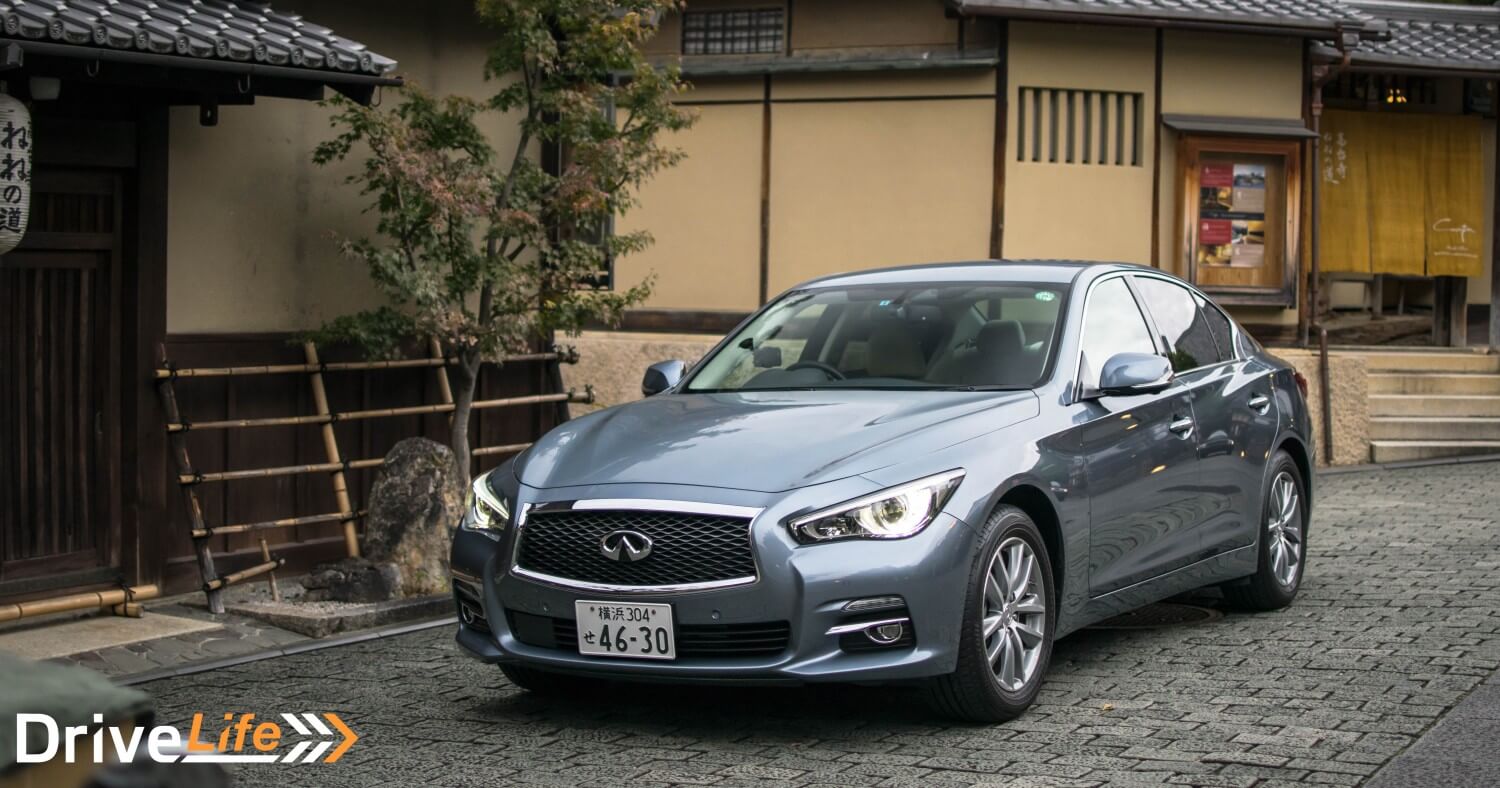
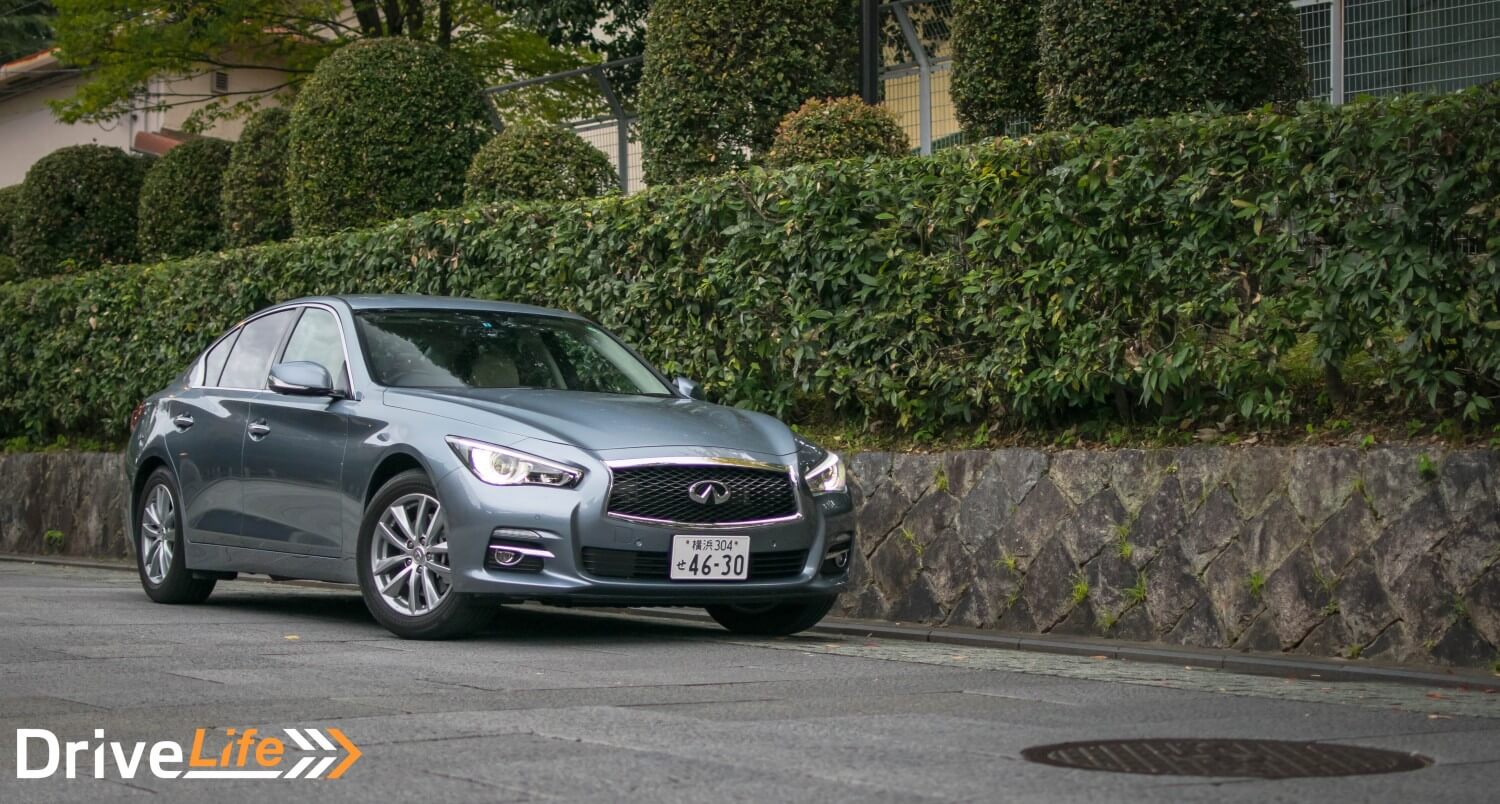
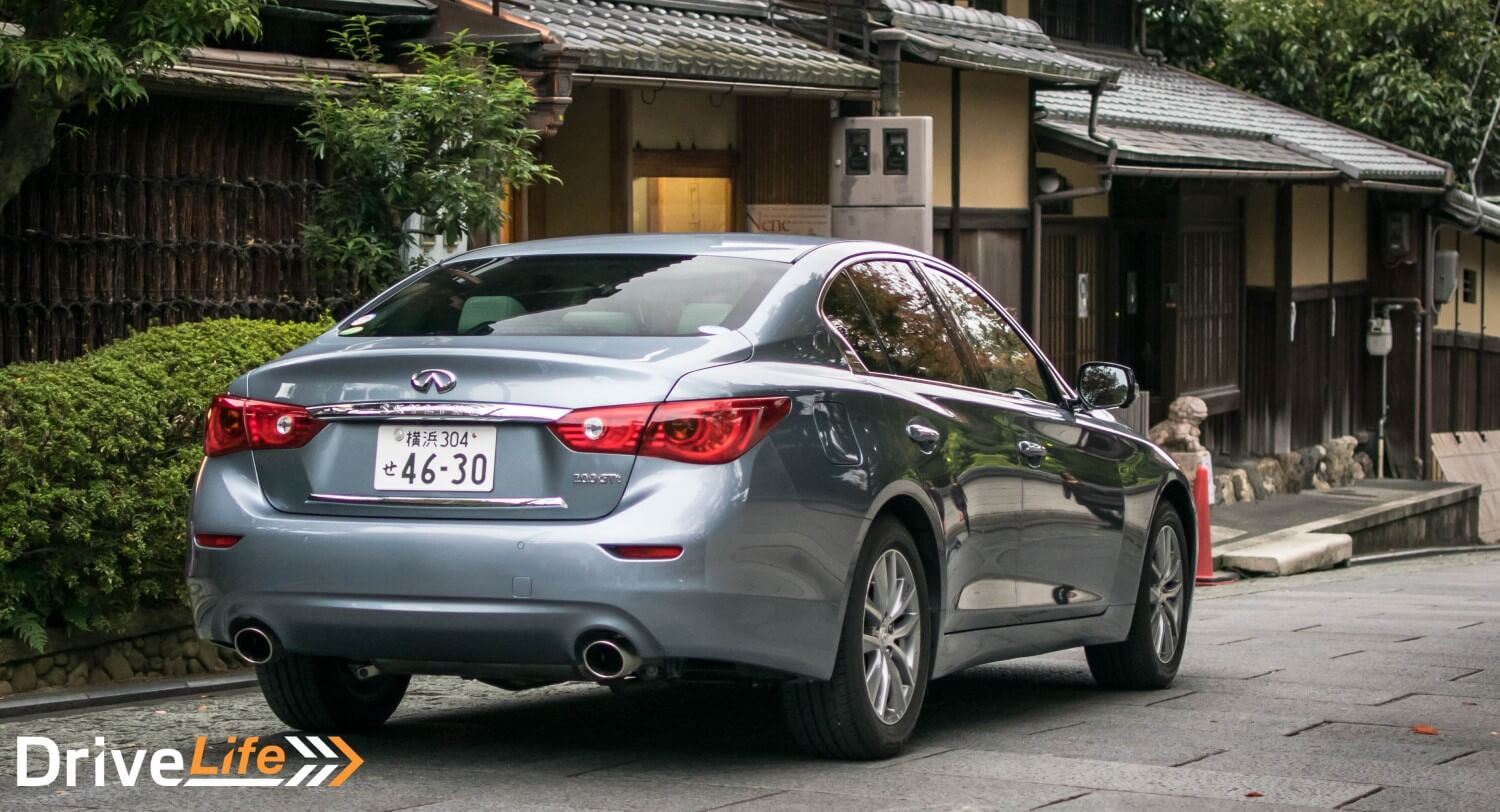
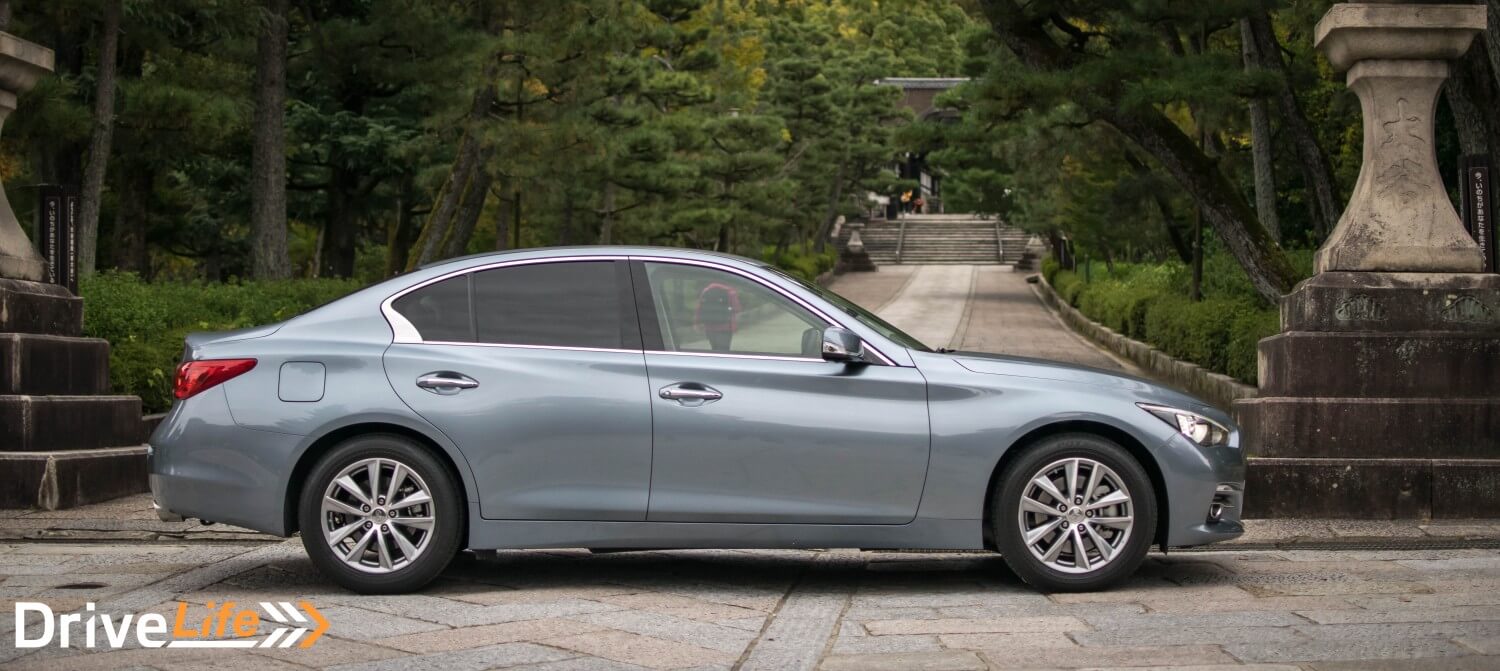
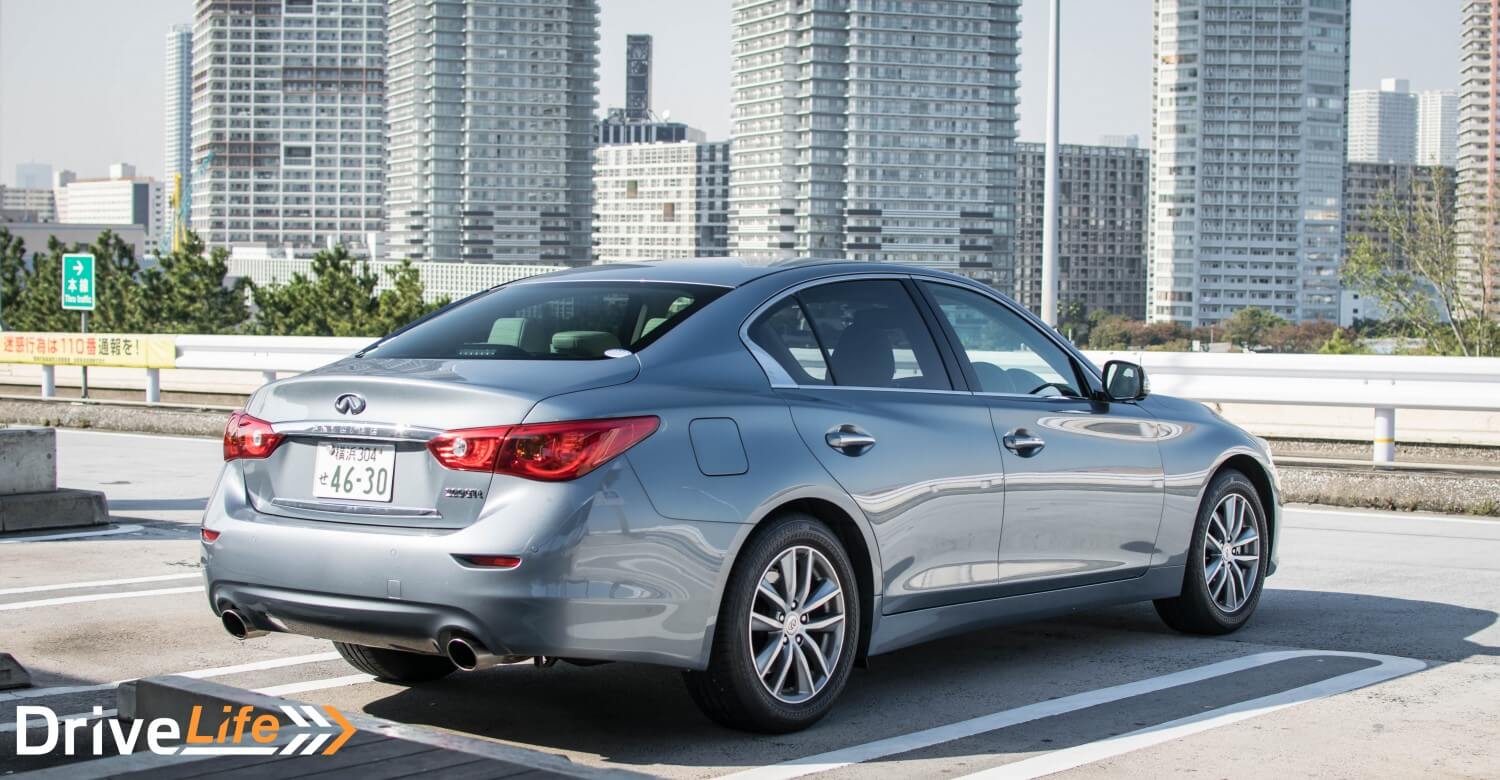
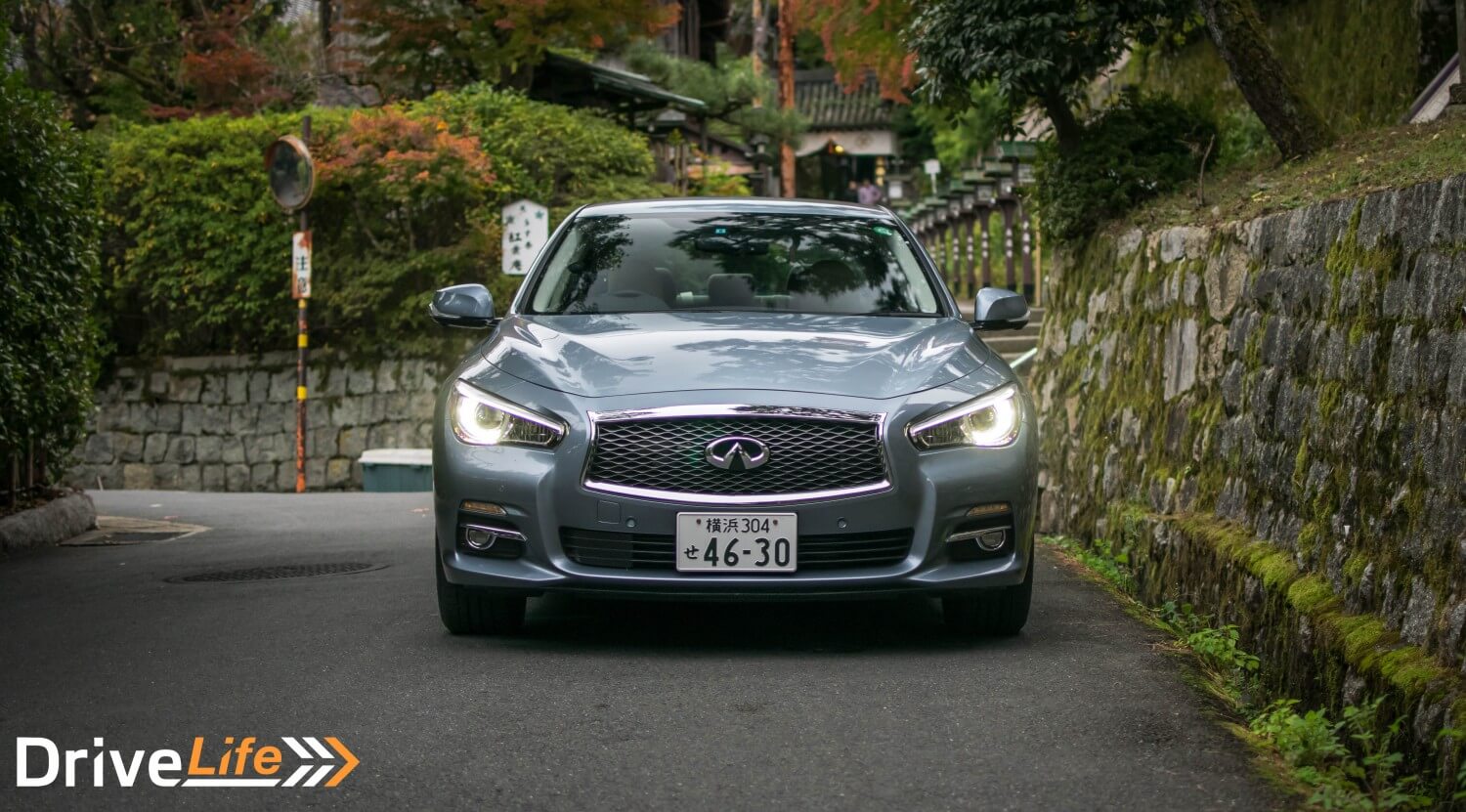

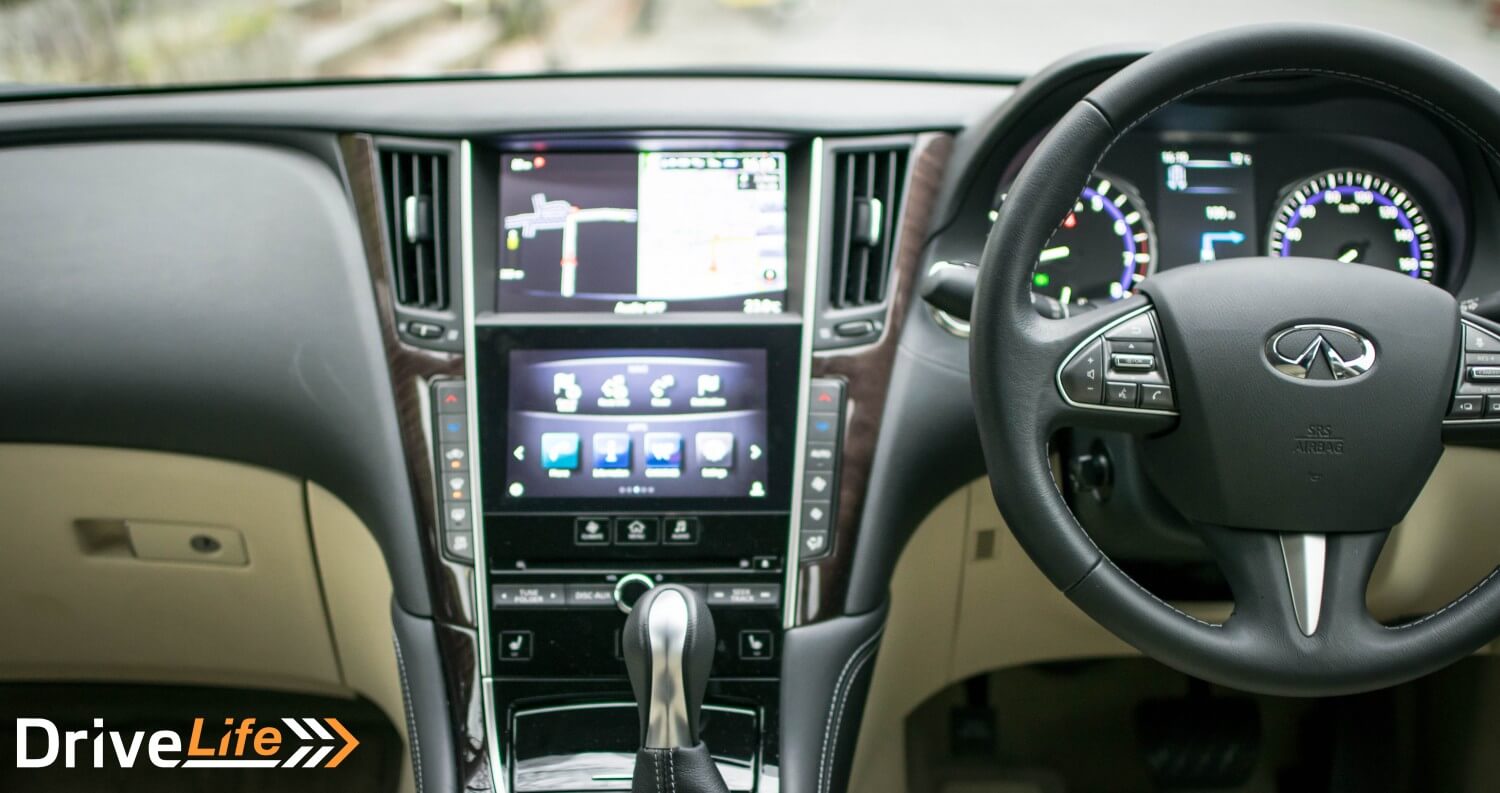
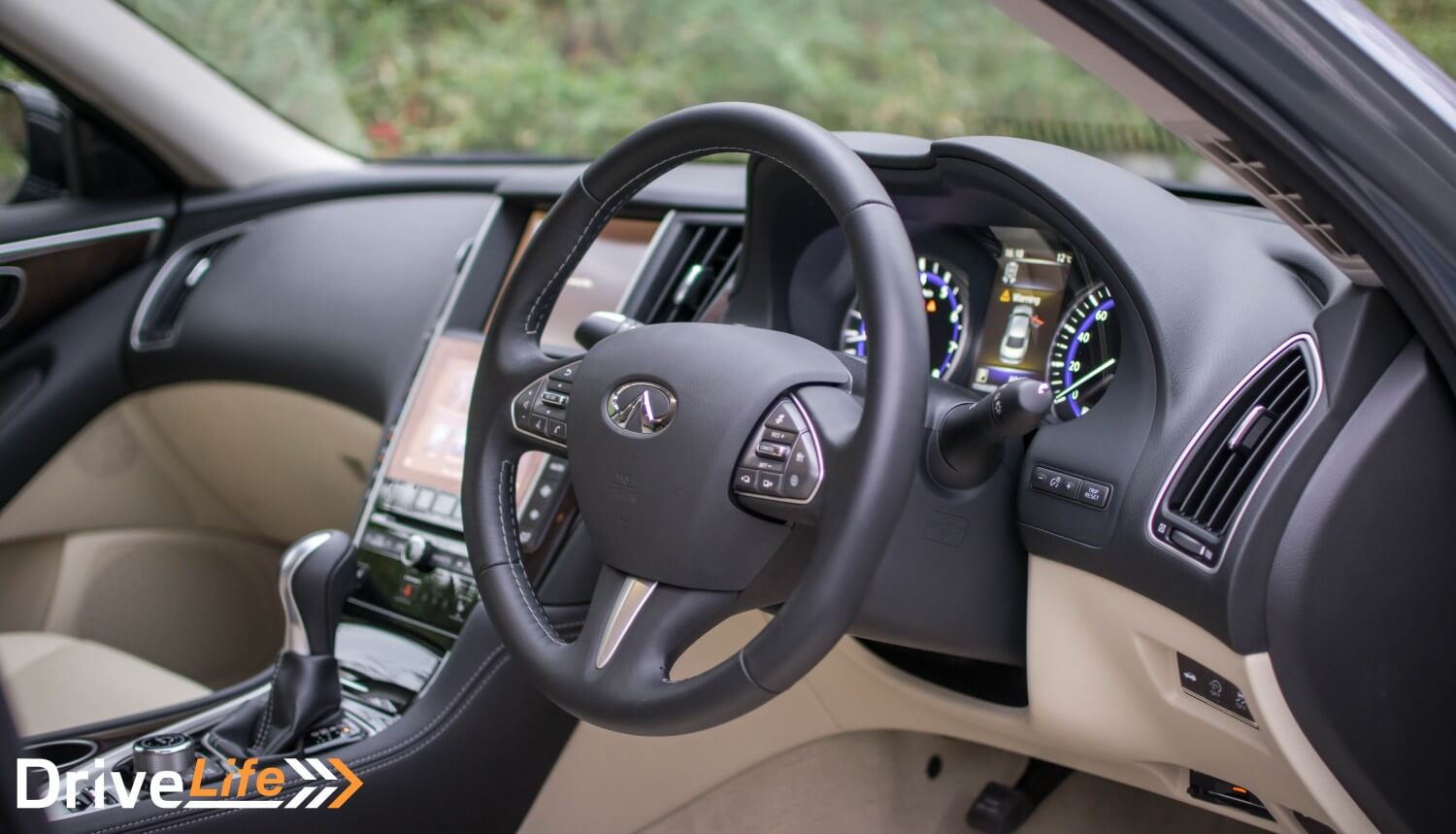
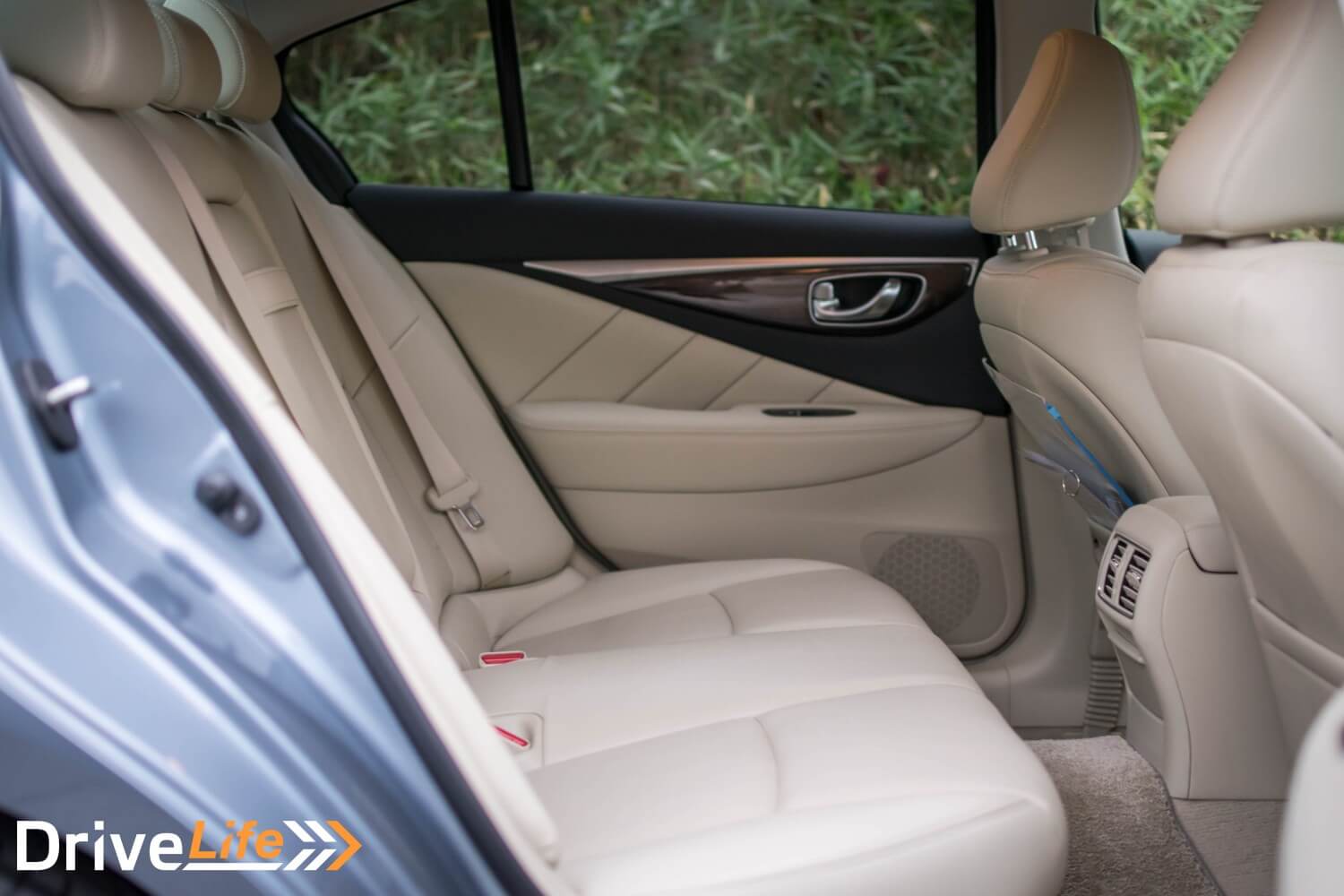
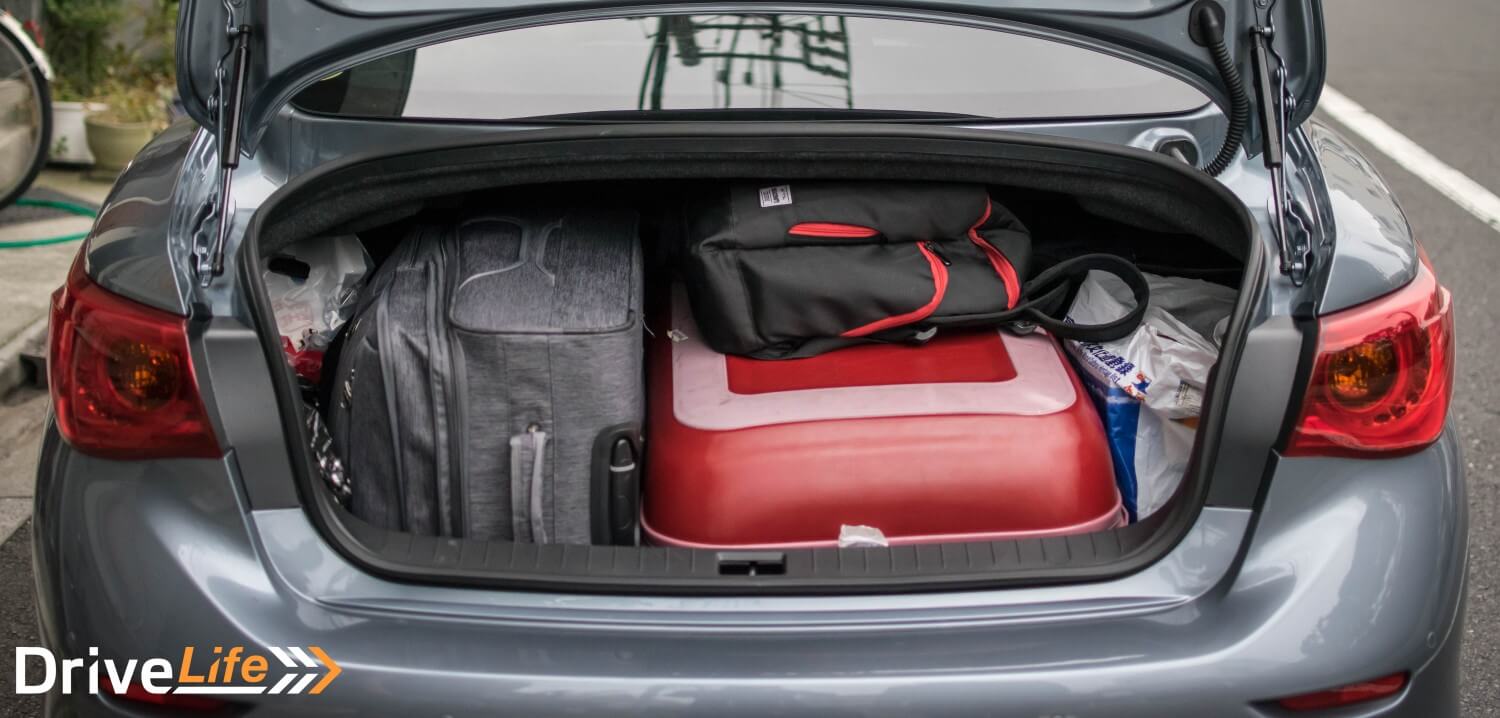
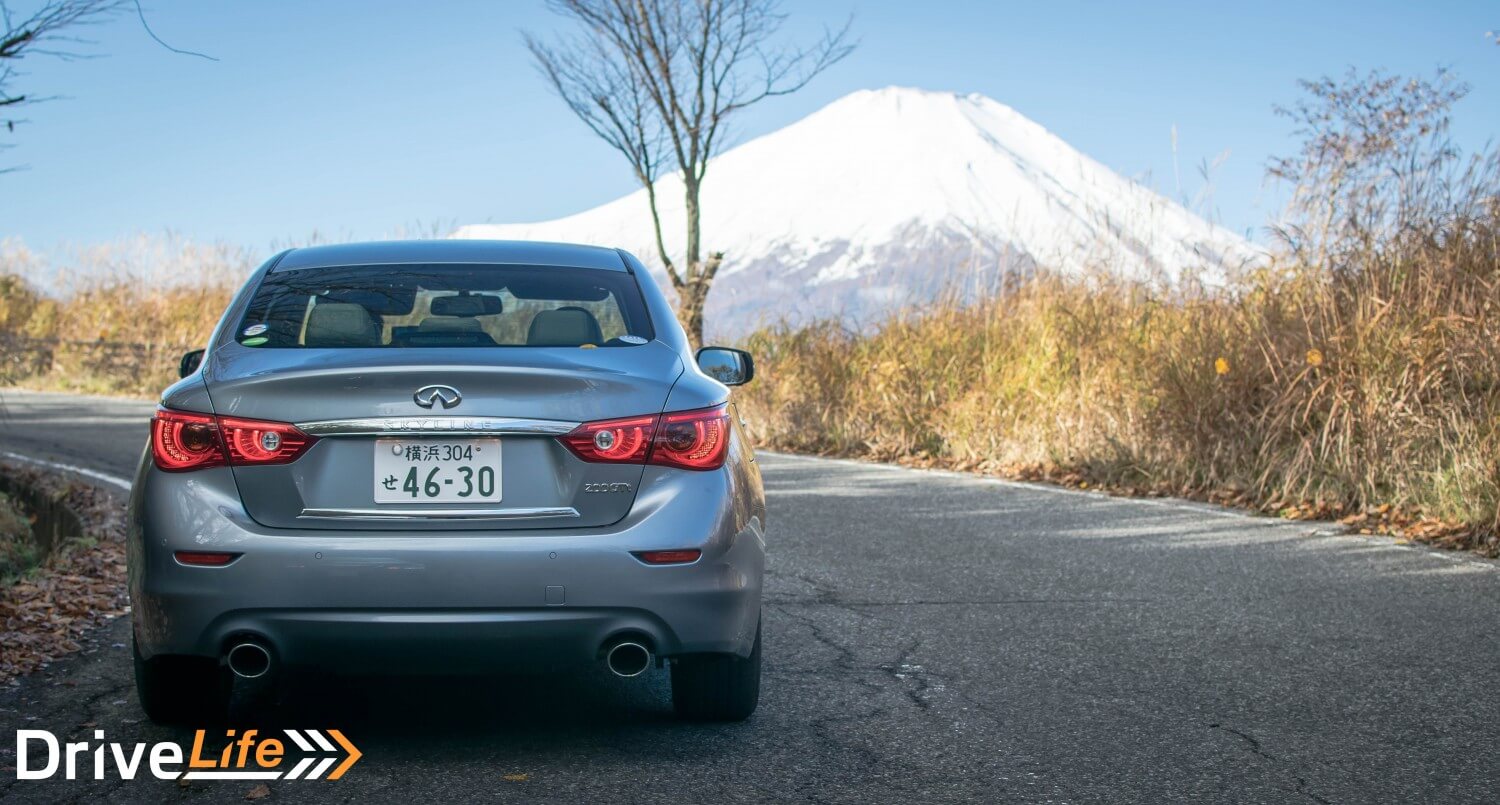
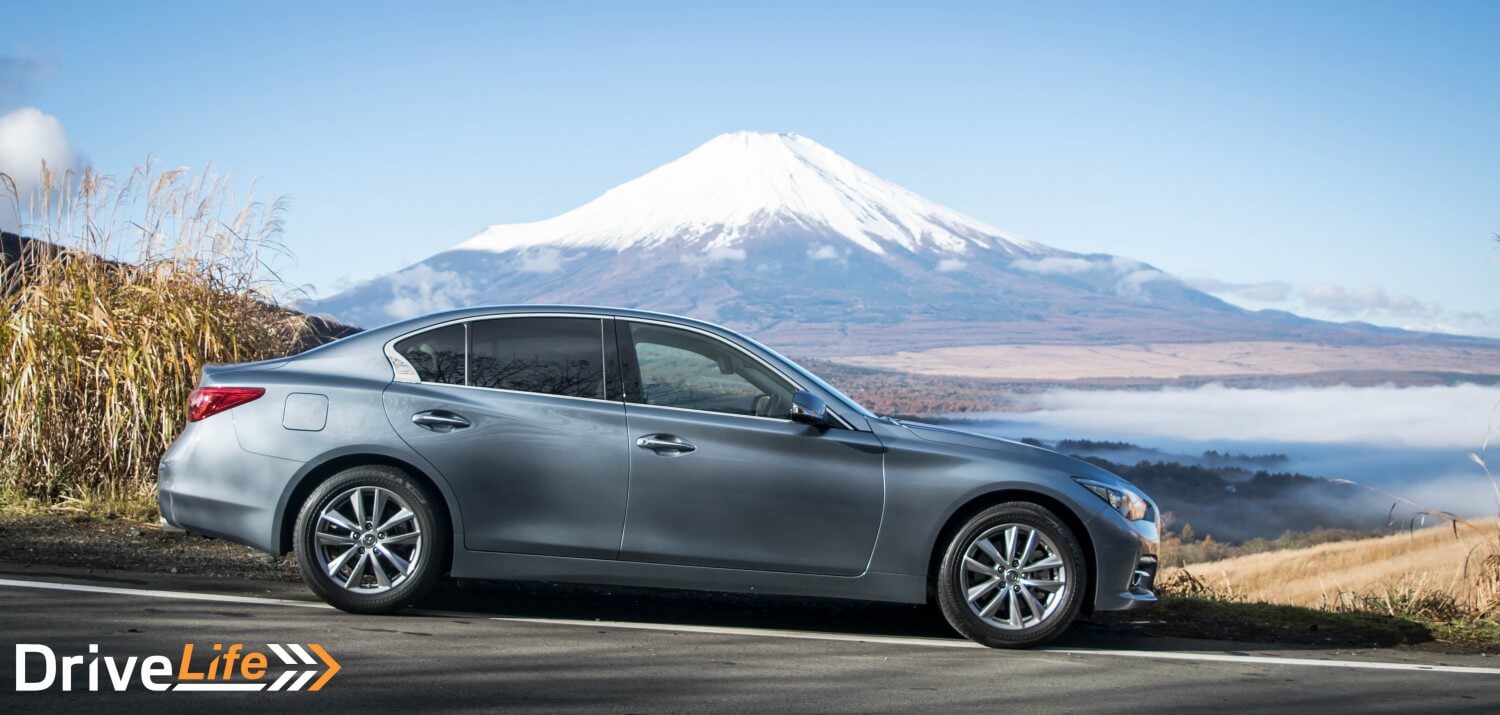
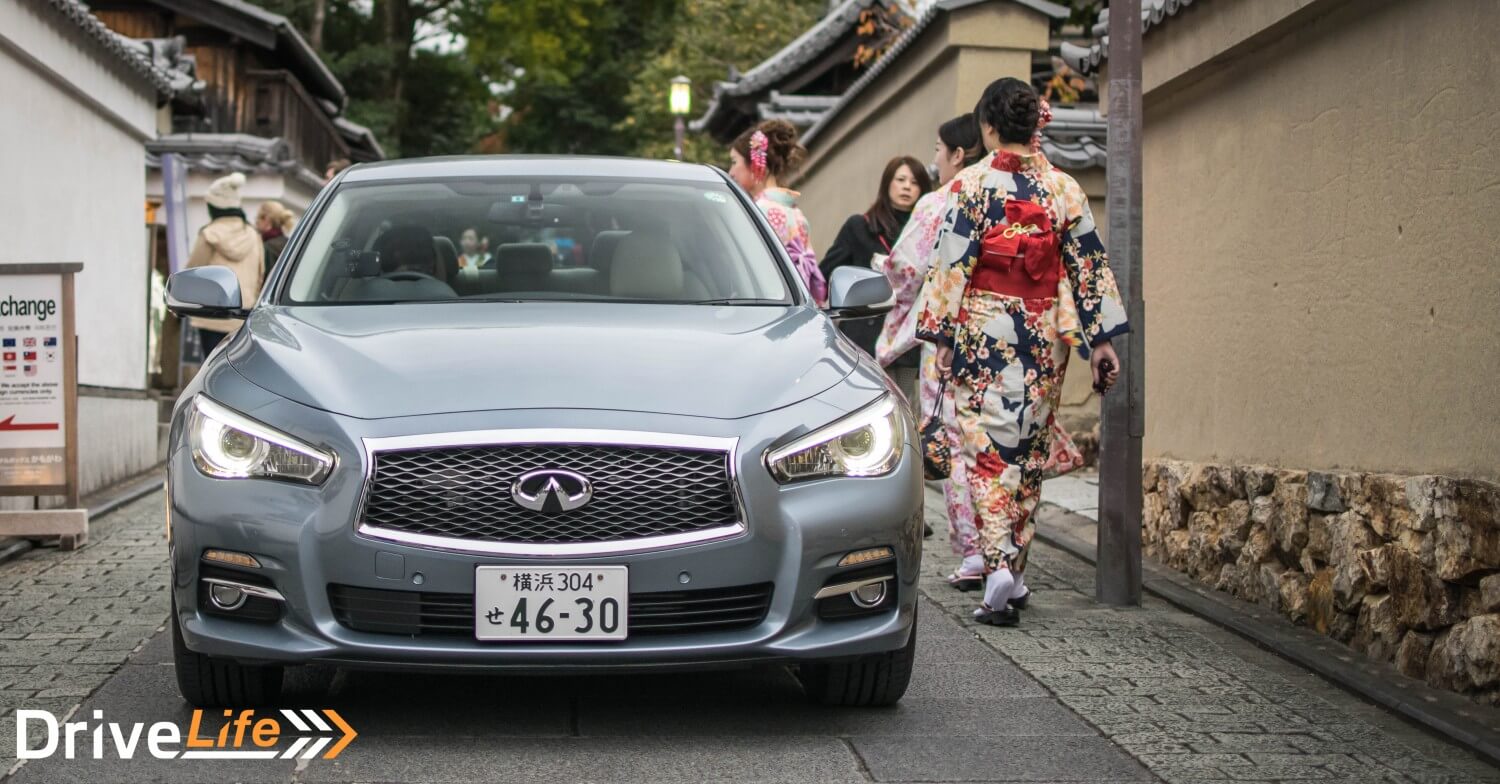
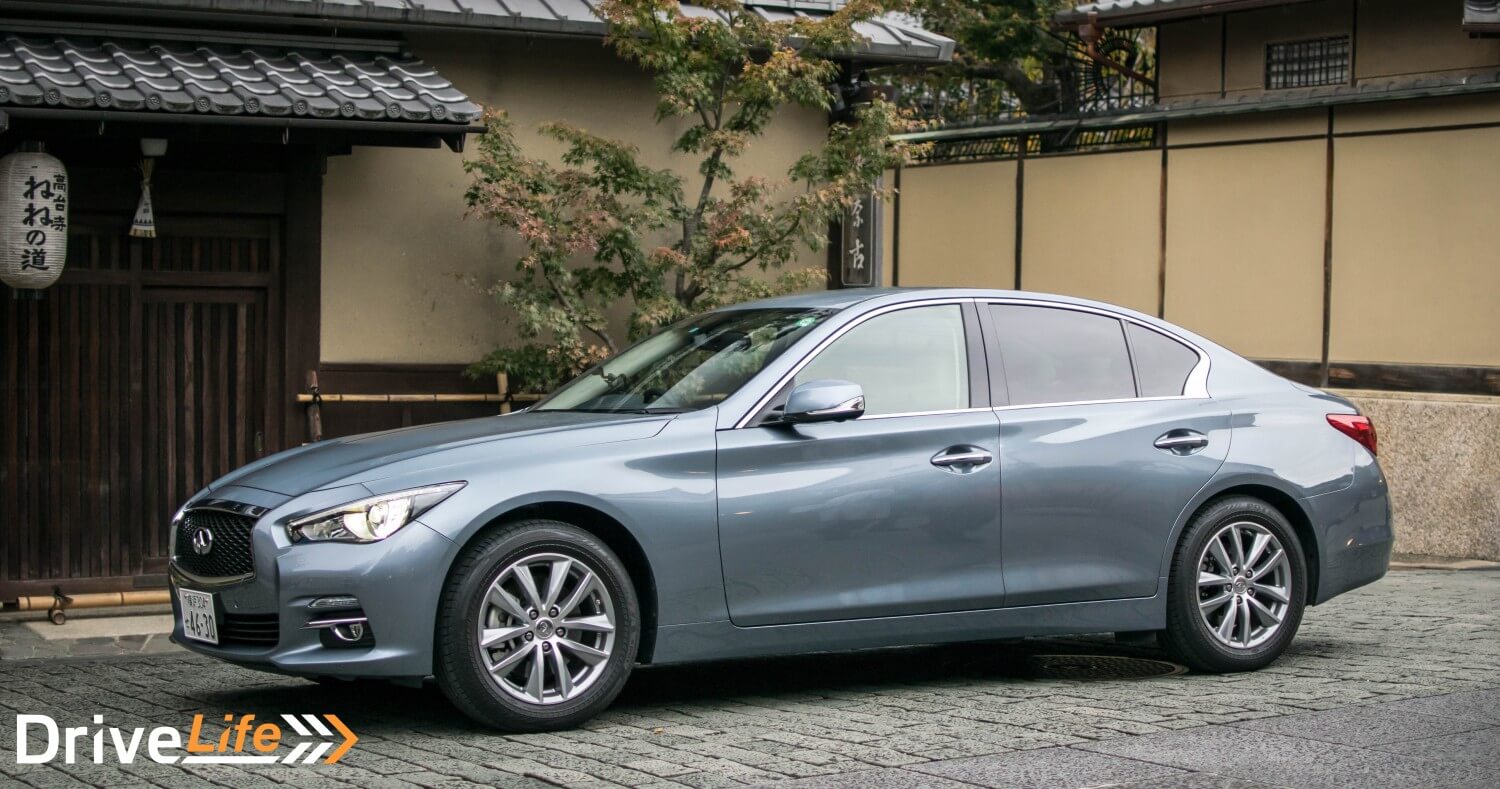
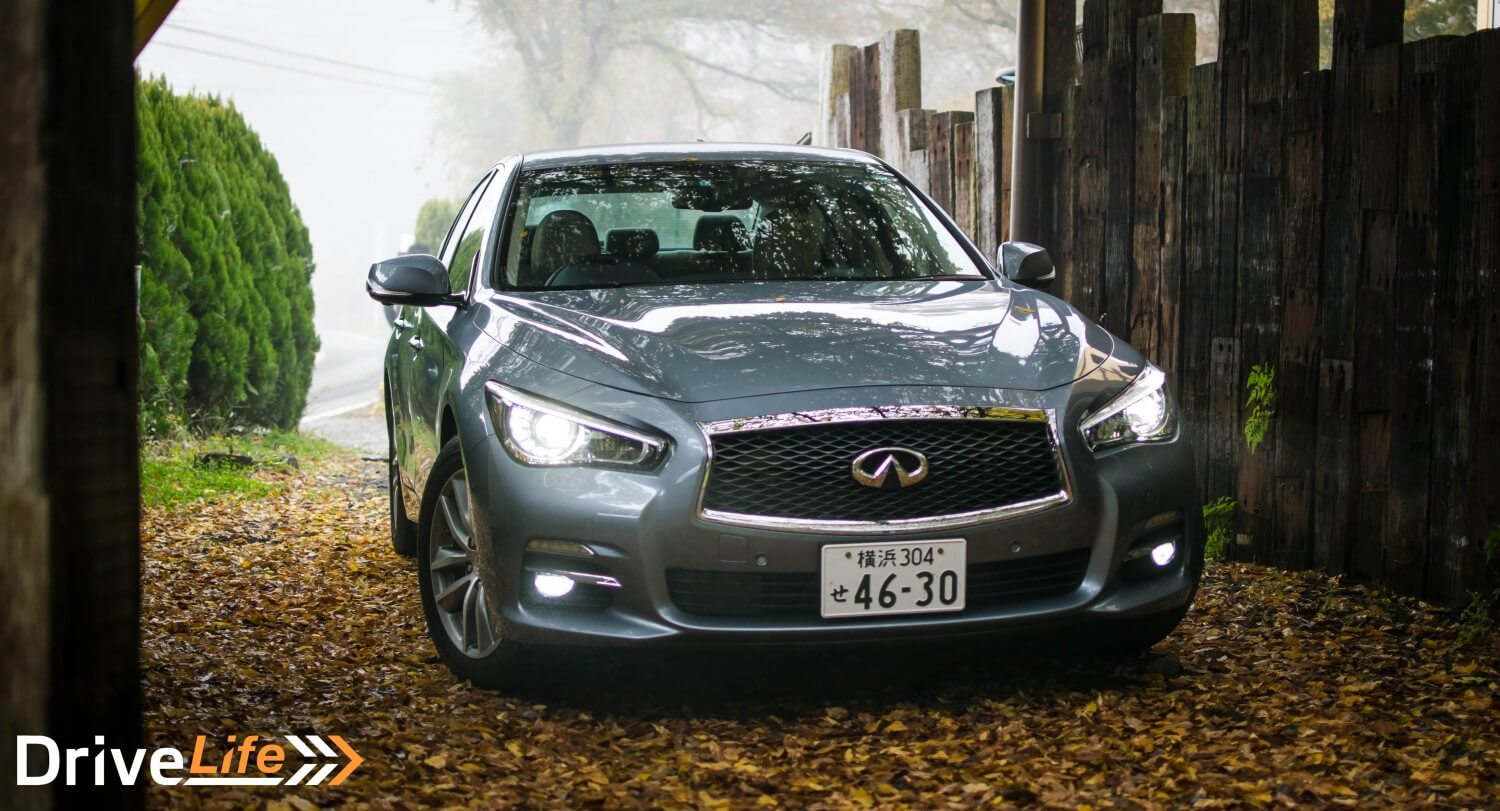












































can I use the 2017 Infiniti q50 transmission in a 2017 Nissan Skyline